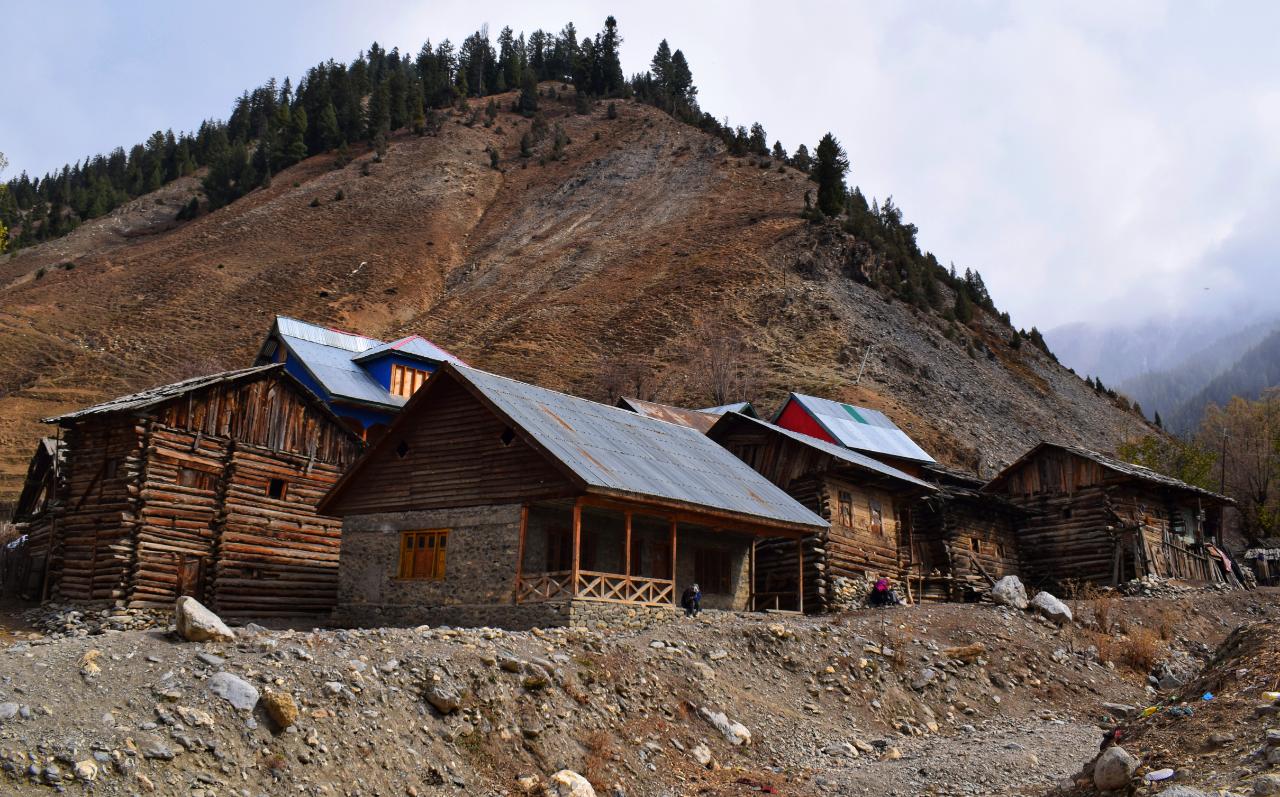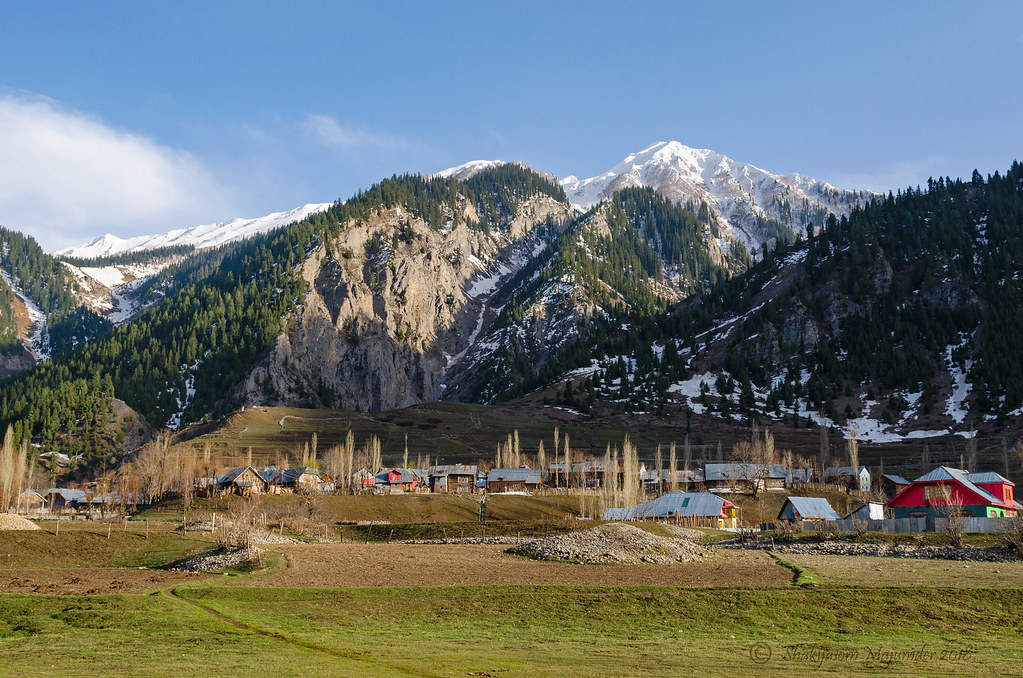Visits and Wails: How Uprooted Gurezis Uphold Their Lost Homeland

Bisma Farooq is a Staff Writer at the Mountain Ink.
“Whenever I go to Badwan, I sit on the bank of Dam and keep looking towards the gushing waters. I see how the dam took away my home and my fields from me.”
Amir Lone, 26, often disappears from the bustling town of Bandipora and returns home with some refreshing tales. But whenever he walks away quietly, Aasiya understands that her brother has once again gone to the other side of Razdan Pass as a longing hermit to his lost homeland.
The sudden shift plays out exactly like a movie script—where a displaced man keeps returning to his roots for some rest and recuperation. But for Amir, it’s more than the cinematic plot. The longing for the snapped roots often leaves him soul-scorched and with strange feelings in his new home.
“He visits his birthplace and spends most of his time alone in woods before coming back to tell us tales about his solitary trips,” Aasiya said.
“This way we keep our Gurez connection alive which was snatched from us by the dam.”
Aasiya referred to the Kishanganga Hydroelectric Dam — a run-of-the-river hydroelectric scheme constructed in 2007 and completed in 2018. The 330-MW powerhouse displaced 400 odd families from Gurez’s Badwan-Wanpora and Mastan Khopri villages.
Support Our Journalism
You are reading this because you value quality and serious journalism.
But, serious journalism needs serious support. We need readers like you to support us and pay for making quality and independent journalism more vibrant.
Today, many of those displaced persons have found a home in the Waterna area of Bandipora district.

Waterna is a typical pastoral pocket of the Kashmir countryside bordered by sprawling fields, rural life features and simpletons going about their daily farm routines. Basking in the summer sun are three women — Jamsheeda Begum (44), Bashira Begum (40) and Jameela Begum (38).
After being uprooted by the dam, they came to Waterna to establish a common neighbourhood, where they share the same culture, lifestyle, and traditions. But unlike in Gurez where they used to spend most of their time in agricultural fields, the trio now spends their time doing household chores.
“Every morning we used to go fields to work there and that was the reason we were healthy,” Jamsheeda said. “Since we came to this unknown place, no one among our community is fit – neither physically, nor mentally.”
The homeland lost to the controversial dam opposed by Islamabad is now about nostalgia for these uprooted families.
“I was in my father’s home for 18 years and then got married and spent the rest of my life with my husband and kids in Gurez,” Jamsheeda said. “It was a blissful life torn asunder by the dam.”
The power project changed the lives of these simple farmers thriving on organic potatoes and cumin. Away from the home, they lost the very idea of life they once knew and loved.
“We have no relatives here,” Jamsheeda said. “Some of our neighbours from Badwan live here in Bandipora but we hardly go to each other’s home. Life isn’t the same anymore for us.”
With her eyes sparkling with tears, and voice struggling to speak, Jamsheeda said: “Jaai dalun gov sai dalun” (Displacement means losing one’s shade).

In her early twenties, Aasiya feels her peace of mind is left behind in Gurez.

“It feels like a prison here,” she said. “I had many friends there, with whom I used to go to mountains and meadows. But here, I feel like a stranger.”
In the same family, lives Ameena Begum. Unlike others in her family, she only speaks her mother tongue—Sheena. “She misses her homeland,” Jamsheeda, her sister-in- law, translates her quiet remark.
At a walking distance from Jamsheeda’s place, lives Bashira Begum. This mother of two is yet to learn the native language of this new neighbourhood.
“Whenever I go to Badwan, I sit on the bank of Dam and keep looking towards the gushing waters. I see how the dam took away my home and my fields from me,” she said.
Unlike Bashira, her kids, aged 18 and 14, are making peace with the new place.
“At first, it was difficult to mix up with new friends and classmates here,” said Taufeeq, Bashira’s elder son, “but now it feels good. I have made new friends and they are good.”

Jameela Begum who’s a mother of three children said her tribe was promised elusive jobs in lieu of their lands.
“Our home changed and that changed our fate too,” she said. “Government took our lands at the rate of Rs 6 lakh per Kanal and sold the same land to us here at Rs 25 lakh.”
Back home, she said, her clan and community were self-sufficient — eating what they would cultivate in the fields. “We don’t have enough lands here,” she said.
“Most of us would lead a happy and healthy life in Gurez, but it has ended now. We had walnut trees at the same place where the dam has been made. We used to take our cattle there but because of the project we lost everything. Among other things, the dam is the reason for the extinction of hazelnuts in Kashmir.”
Mountain Ink is now on Telegram. Subscribe here.
Become Our Ally
To help us strengthen the tradition of quality reading and writing, we need allies like YOU. Subscribe to us.













